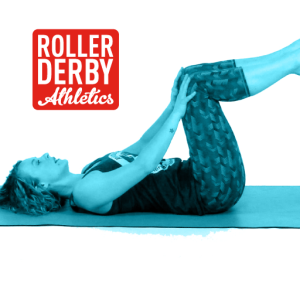
If you’ve ever been coached or taken a fitness class of any kind, you’ve almost certainly heard the phrase, “engage your core.”
But unless you’ve got a strong fitness, yoga, or dance background, that instruction might be really difficult to follow. What does “engage your core” mean, anyway? Does that mean flex and try to make a six-pack? Does that mean suck in my stomach? Puff it out? Make a curve with my low back, or flatten it out and tuck my butt under / pelvis forward?
“Engage your core” is an extremely vague phrase, and difficult to visualise. So we’ll start with some anatomy, and then do some exercises that will let you demonstrate to yourself the actual muscle contraction desired, and what that feels like.
Anatomy Lesson:
When trainers refer to core strength, core stability, or the muscles of the core, people sometimes automatically picture six-pack abs. In fact, while not an anatomical term, “core” more generally refers to a big list of muscles extending from your butt to your shoulders – basically your entire trunk, excluding your arms and legs. It’s a three-dimensional group of muscles that stabilises your body during movement or exertion, and holds all your internal organs from falling out (luckily, that last part is engaged without us having to think about it).
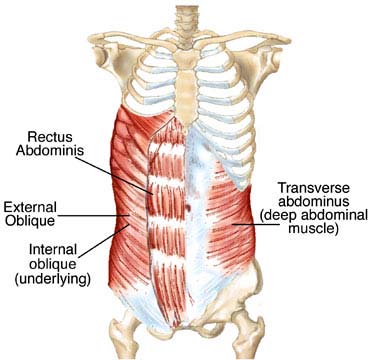
For the purpose of keeping us safer and stronger during most roller derby & cross-training work, when we talk about our core, we are generally referring to a subset of this full-torso umbrella term. For roller derby, the key components of our “core” that we want to recruit and strengthen are the inner muscles on our front (anterior) side from our ribs down to our pubic bones, the muscles of the hips and bum, and the muscles of our lower and middle backs.
Let’s talk about those six-pack abs for just a second (and then forget about them forever!). Those muscles are called the rectus abdominis, and every one of us has a “six pack.” It may just be a little hard to see under a layer of normal, healthy, human tissue necessary for our survival (and sometimes also a product of our enjoyment of actual, liquid six-packs). For our purposes, the ‘abs’ are basically pure vanity, and they do very little to make us stronger or better roller derby players.
Instead, we need to focus our energy on the all-important transverse abdominis (TVA for short) – the layer of muscle underneath the rectus abdominis and obliques, that stretches from our hip bones to our ribs, and from front to back. TVA is complemented by the oblique muscles, and we need those to be strong and stable for all the lateral movement and power generation necessary for our sport.
Common Dysfunction
Most of us have pretty strong low back muscles, so why do we feel pain in our low backs when we are skating in a pace line or doing endurance laps?
For most humans, including roller derby athletes, the anterior core muscles (transverse abdominis, internal and external obliques) and the bum muscles (gluteus maximus, medius, and minimus) are weaker than they should be to support normal activity, and much weaker than needed for intense physical effort like skating or jumping. When we can’t effectively recruit the abdominal and glute muscles to help stabilise our body, it basically forces the back muscles to work overtime, and then they get tired and crabby.
The best way to reduce that low back pain, therefore, while also creating incredible strength and stability to help your every single other movement in derby and in life (I’m not exaggerating!) is to work on effectively recruiting, and then strengthening, your abdominals and glutes. (Stay tuned for a whole pre-hab on glutes coming soon… hooray, butts!)
How to Engage Your Core (and then how to make it stronger)
In the video below I will walk you through a couple of simple exercises to help you learn the feeling you should get when engaging your transverse abdominis (TVA) muscle. Once you’ve become acquainted with those muscles and the feeling of engaging them, you’ll be ready to try the strengthening exercises that follow!
All-Star Access members – click here for your bonus content for this workout! (Don’t know what All-Star access is? Check out the details here)
Here’s the drill. This entire sequence will take you just under 10 minutes to complete.
Meet your TVA: Isometric contraction – 3 x 8 seconds.
Strengthen your TVA:
- Dead Bug x 60s
- Sexy Cat / Angry Cat x 60s
- Bicycles x 60s
- Plank-Ups x 60s (or ab-leg lifts if you have an upper body injury)
- V-sit progression x 30s each variation, with rests.
- Plank x 30s front, 30s each side.
- Balance out front & back: Bird Dogs x60s
Stretch:
- Cobra x 30s
- Hip flexor lunge stretch x 30s each side
When should you do these exercises?
As a minimum, I recommend including two 8-counts of the activating exercise (the isometric contraction) and dead bug for 30-60 seconds prior to every session of on-skate training or off-skate bodyweight training! This will ensure your TVA is activated and engaged prior to the work you’re about to ask it to do. As an option, you can also include sexy cat / angry cat for 30 – 60s as well, because it helps warm and loosen your spine.
I do not recommend doing the full sequence before working out or skating, however. You need your core muscles to be strong and available to you, not tired. So save the full sequence for after practice or workouts, or on its own when you’ve got a free ten minutes in front of the telly.
Want more?
As I mention in the video, if this video has helped uncover some weakness you didn’t realize you had, or if you’ve suffered from a lot of low back pain or back injuries, I’ve got something you’re going to love. The CoreBuilder program is four weeks long, and uses a physio ball (aka stability ball) to dramatically ramp up your core strength in short order. Just three or four 25-minute workouts per week will get you some crazy new strength and will reduce that nagging back pain so many of us get when we’re skating our laps! Read all about CoreBuilder here.
In conclusion:
Your TVA is where it’s at, and if you can harness its power for the forces of good, you’ll find dramatic new full body strength emanating from your strong core like never before!
Once you’ve learned the feeling of engaging your TVA, take that with you onto your skates. Whenever you’re skating in derby stance, or executing a skill – like a jump, a positional block, a plow stop, or a quick change of direction – you should now be able to feel your TVA being locked down, and making you more effective, stable, and quick.
Question for you!
Which of these exercises was the most challenging for you?? Please leave a note in the comments – I’d love to hear from you!
Now, go forth and engage your core!

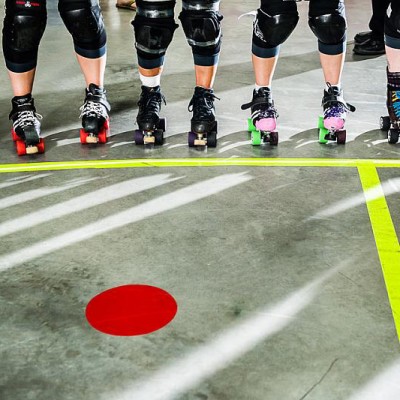 Fresh Meat – You Got This!
Fresh Meat – You Got This! 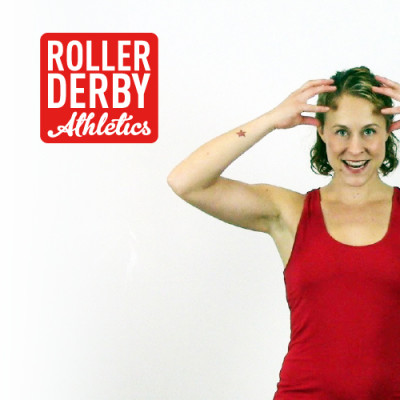 PreHab: How to Reduce Concussions
PreHab: How to Reduce Concussions 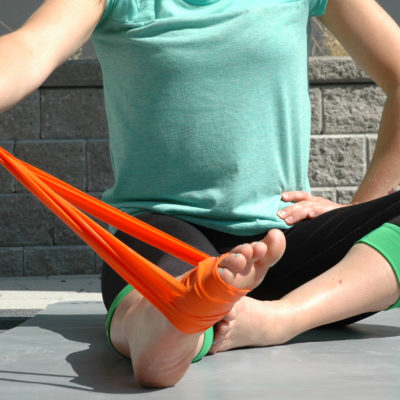 Prehab! Feet and Ankles
Prehab! Feet and Ankles 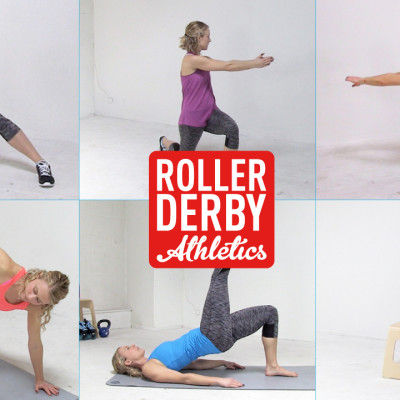 The Top Ten Exercises for Roller Derby Athletes
The Top Ten Exercises for Roller Derby Athletes 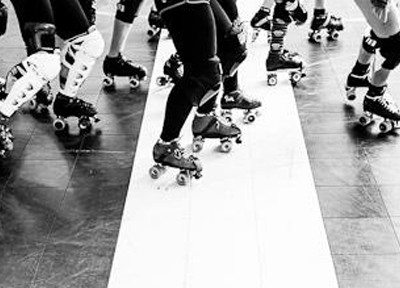 Stop sucking. Start winning.
Stop sucking. Start winning.
Thanks for this info! What can I do if I have diastasis recti and want to improve my core for derby? Am I doomed?
You are not doomed!! I have a handout I made about this. Shoot me an email and I can share it with you! bq – at – rollerderbyathletics.com
Is the “engaging your core” video you’ve attached safe and beneficial if you have diastasis recti?
Hi Tabatha! As long as you don’t see the protruding ‘football’ in your tummy when you do this move, it should be safe. learning to activate the TVA muscle is a critical piece of recovering from and learning to live with DR. If you do see the protruding muscle happening, scale it back. Please email me at bq @ rollerderbyathletics.com or use the contact form here and I can send you a handout I’ve made specifically for athletes with diastasis recti!!
Thank you! Ive incorporated a few of your great routines into my newbie (and on a tight budget) attempts to get fit for Derby over the last few months. These are great too, I found the Bicycle-elbow-to-knee one reeeally tough, I just about managed it, but I’m sure it will get easier. I couldn’t do the Hip Flexor stretch at all because my middle aged knee caps (including old meniscus injury) did not like my 130lbs flexing about on top of them….so I’ll leave that one out ;-)
Thanks, Maria! There are some other hip flexor stretches you can do without putting weight on your knee, too. You could do the same stretch in a lunge position with your back knee raised; or lie on your back and bring one knee up to your chest to stretch the other hip. If this doesn’t give you a stretch, lie on the edge of a bed (Actually, a kitchen island counter is ideal because it’s higher, but not always available!) with your butt almost hanging off the edge. Bring one knee to your chest and let the other leg dangle. Try those out – it’s important to stretch the flexors!
I have pelvic floor dysfunction-in the way of constant contraction, the more I do core work, the worse it gets and my physical therapy stretches don’t work in decreasing the spasm pains, any advice? My doctor’s answer was the more I engage them the worse it will be but I refuse to believe that is my end answer. I would think making them stronger might give me better control over them which could decrease my pain, thoughts? suggestions?
Hey Dell – Sorry to hear about that! Sounds very frustrating. I’m glad you’ve seen a physiotherapist – that was going to be my first suggestion! I would follow their advice over your doctor’s as they’re more trained in this area. Have you tried biofeedback training? Little sensors give you a read-out and you can see how contracted/relaxed the muscles are. A short bit of online research tells me this is often useful for PFD therapy. See if your physio can do this or refer you to someone who can?
Thanks for this! I’m currently recovering from ankle surgery and have taken the challenge of working out the “broken” members of the team so this will be helpful for people with leg injuries. In the video, you mentioned a modification for plank ups for upper-body injury, but I don’t see it. Please advise. Also, what other things can our girls with upper-body injuries do? TYIA, Jinjure
I may have made an editing error and left out that plank-ups alternative! A roll-up (pilates style) would be a good alternative. I have another workout called “No Hands” here: http://www.rollerderbyathletics.com/no-hands-workout and also this “Jump & Jive” one:www.rollerderbyathletics.com/jump-jive/ which might require a minor modification depending on injury severity, but I recorded it when I had a sprained wrist :)
Thank’s for this a lot! Core strengthening is really a weak point at my training because I have a hyperlordosis and when I do core excercises I have to focus so hard because in three of four excercises it’s my lower back that starts to hurt and not my TVA or front stomach muscles. Or if I start to feel my TVA work I still have a lot of pain in my lower back. Planks are especially hard for me, I really can’t do them for a long time. Also when skating I have problems with stability and lateral agility. It got a bit better when I started doing a gym machine that exercises deep back muscles accompanied by a physiotherapist. But I still have problems with all typical core exercises because it’s the wrong part that starts to hurt. Do you have any advice?
Hi Kitten! Sorry to hear about your struggle! Usually if one muscle hurts it’s because another muscle is underperforming, so it’s working overtime. That makes some sense based on what you’re describing – your low back may hurt because your other core muscles are leaving too much of the load to it. That’s just a hunch though, and your physiotherapist is the best person to be able to advise you! I hope you can keep working with them to resolve this for good!
Going to start this right now! How many times a week should we be doing the whole workout? Do you need a rest day inbetween? Thanks!